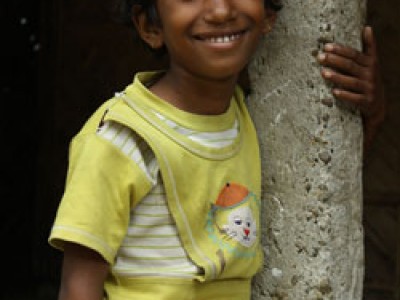
An Intervention on Beauty’s Behalf
Beauty lost her older sister, Ratna, of tuberculosis in 2008. Ratna’s sudden death left everyone in the family emotionally broken and disintegrated.
In the midst of their grief, the whole family had to undergo a series of medical tests for their safety. The test results uncovered a shocking fact; Beauty tested positive and was in the first stage of tuberculosis.
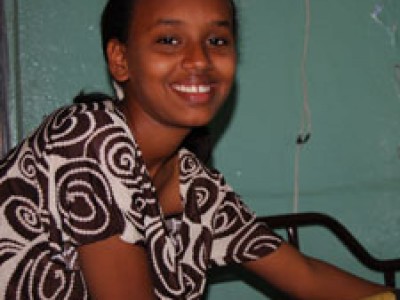
Who Are the Highly Vulnerable Children We Serve?
Destu and her brother lost their parents and were left under the care of their aunt, who was also a prostitute. Destu assumed the responsibility of raising her brother and managing the house since their aunt was never at home to care for them.
How Do We Help Sponsored Children With Serious Heart Conditions?
There are nearly 6 million children worldwide with potentially treatable congenital and acquired heart defects that do not have access to care. In 2009, of the estimated 6,000 children in Uganda in need of cardiac intervention, only 172 received treatment (Uganda Heart Institute).
Alex was one of the statistics — a child with a heart problem with seemingly no hope for treatment. Alex’s father recalls:
“It started as a fever. My wife and I took my son, Alex, to the hospital, but it did not get any better. And when we took him to a bigger hospital, his symptoms baffled the doctors. They had no solution for us but to refer us to the Mulago Heart Institute where we started on a course of treatment.
“This went on for three years with no change. At that point I started to pray to God, saying if it is God’s will to take him away from us then so be it. I spoke to Alex as well and he was of the same mind. Because the doctors saw that I was poor they feared to tell me about the operation abroad because they knew I could not afford it.”
Like many children whose heart conditions go untreated, Alex and his family prepared for the worst. (more…)
What Impact Does Access to Clean Water Have on a Community?
No one would think people who live in an area rich in natural resources would have a problem getting water. But for many years, struggling to find fresh water was a way of life in Meagama Village in Papua, Indonesia’s largest province.
Longstanding agreements with other villages limited the sources where each community could draw water. For the villagers of Meagama, accessing water meant a two-hour journey on foot. Because they usually used a bucket to transport their water, obtaining enough water to meet their needs often required several trips.
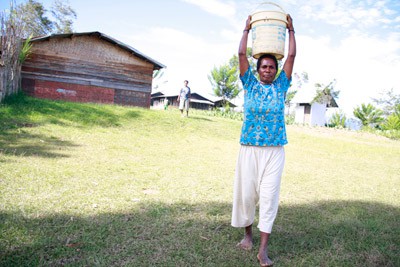
But the difficulties didn’t stop there; the water the Meagama people put so much effort into getting actually caused them harm.
Chiropractors With Compassion
The hard work of Chiropractors With Compassion has helped transform the community of Batey Angelina from a place many wanted to leave behind into a model community in the Dominican Republic.
With a network of nearly 100 doctors of chiropractic throughout Canada and the United States, committed to donating U.S. $20.00 for every new patient that comes into their clinic, Chiropractors With Compassion have been able to raise around $1.2 million dollars since their founding in 2004.
By partnering with Compassion Canada, they have funded a number of major projects around the world and Batey Angelina is one of these.
The Bible: A Great Birthday Present for Children?
Children in México’s most impoverished places do not normally get the joy of celebrating a birthday. In Centro de Desarrollo Integral Cordoba Child Development Center, as in many other student centers supported by Compassion, children are recognized and celebrated with singing and cake, making a difference in their self-esteem and value.
At the development centers, children receive the gift of being children, away from their lack of money and food, inside a small refuge where sadness and abuse are not present.
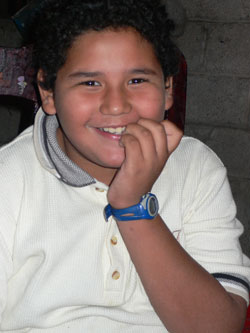 Pepe comes from a good family. His mother, Hilda, knows the Lord, but she came to the church when she and her husband were under much stress and struggles. Although the couple tried hard to stick together and to create a safe environment for their children, they used to fight over their lack of money.
Pepe comes from a good family. His mother, Hilda, knows the Lord, but she came to the church when she and her husband were under much stress and struggles. Although the couple tried hard to stick together and to create a safe environment for their children, they used to fight over their lack of money.
Hilda says she and her husband fought because they did not have enough money to eat. She recalls one day when they were yelling at each other and did not realize Pepe was hiding under the bed. They saw Pepe crawl up into the corner of the bed and pray, “God please give me much money so my daddy and mommy will not fight.”
One Step Further From the Grip of Poverty
![]() Valdênia was 15 years old when she taught a little boy in the community to read and write.
Valdênia was 15 years old when she taught a little boy in the community to read and write.
“He was 7 and had difficulties learning at school. His mother asked me to help him.”
At that time, Valdênia was in high school, but had no hope to get into a university. Today, three years later, she can see that she was practicing her vocation.
What Difference Does the Child Survival Program Make in the Lives of Mothers and Babies?
Marisa is a member of a the Lawa tribe, a minority group with its own distinct dialect and tradition found only in certain isolated areas in northern Thailand. She lives in Laoop, a village located in a very high, remote area.
Even though Marisa finished grade nine, the quality of education she received at the school in her village was poor compared to the education she could have received at a school in the city.
As a member of a minority tribal group, Marisa’s options after school were limited. Most villagers in Laoop are educated only until grade six or nine, and after their brief education they usually find jobs and begin working. Marisa chose to work for a brief period, and when she turned 18 she married one of her neighbors and began her role as a housewife and a mother.
“Being pregnant made no difference to my work schedule. I still worked in the fields because I believed that it would strengthen my unborn child. I also ate the exact same meals I had before I was pregnant. My meals consisted of rice and boiled vegetable with spicy sauce. I did not eat anything special.
“After I got home from the hospital, I went to a health center nearby my village to attain information on how to raise my baby to be healthy and how to increase his weight. At the health center the nurse assistant briefly informed me on some basic guidelines, but she explained the information too quickly and I only understood a little of what she said.”
Counting Malaria Out
At the center of Riaciina village in Kenya lies a semi-permanent house, traditionally constructed. The walls of the house are made of mud and smoothly smeared with cow dung. The roof is thatched with iron sheets. There is a big gap between the mud and iron sheets. Mosquitoes penetrate freely day and night. 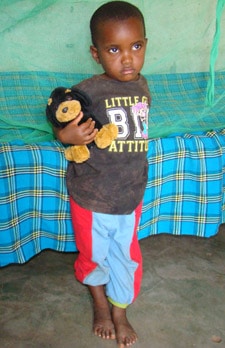
This is the home of Amina, a toddler enrolled in the local Child Survival Program (CSP). At the back of the homestead lies waste from the nearby kitchen. On the other side of the home are thick bushes of indigenous trees.
As the CSP specialist visited the mother, mosquito bites could be noted on the face of the child. Throughout the session, the TEEEE! TEEEE! sound of mosquitoes could be heard.
In some countries, mosquitoes are just nuisance, but in Riaciina, mosquitoes pose a deadly threat. Mosquito-borne malaria is the major killer disease in the area.
Riaciina village lies in the semi-arid part of Kenya on the extreme southern slopes of the largest mountain in Kenya, Mount Kirinyaga. The occupants are mainly the Ambeere and the Akaamba people whose primary work is farming and fishing. (more…)
How Do Our Sponsored Children Survive in a “Ghetto Zone”?
Chilibulo is a parish located in the southern zone of Quito, the capital city of Ecuador. This area doesn’t have much economically because jobs are scarce. A walk along Chilibulo’s dusty and poorly paved streets highlights the lack of progress.
On the sides of the streets there are little houses made of bricks and cement. Some of the homes are not fully constructed and others are old; the colors of their walls have long faded. Many families live here because they have unsteady jobs with low salaries. Most of them are informal merchants or bricklayers.
Chilibulo is also considered a “ghetto zone” due to area gangs and the high rates of delinquency.
This is the place where Mario and his wife, Martha, brought two children into the world.
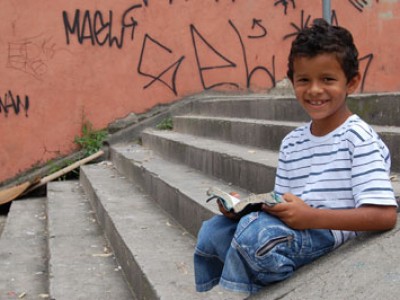
How Do We Introduce Children in Poverty to a Christian Education?
Many children enrolled at the child development center got their first contact with the Word of God at the center. They had never heard about God, Christ or stories such as the Garden of Eden, Noah’s Ark or Joseph in Egypt.
Transformation is the best word to define what happens with the children during the class. Parents recognize the difference in the way their children behave.
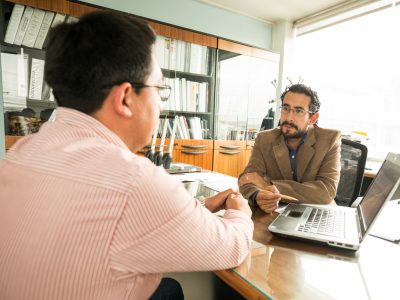
Who Has the Responsibility for Protecting the Children in Our Program?
Our mandate as child advocates is to ensure that all children within our care and those we interact with every day enjoy a loving and safe environment.
We are committed to protecting children from all forms of abuse and exploitation. Our board policy communicates this clearly by stating that: “Concern for children is the cornerstone upon which Compassion International has been built. We are opposed to all forms of abuse and exploitation and will do everything within our power to ensure that no harm comes to any child registered in our program due to his or her involvement in the ministry of Compassion International.”


